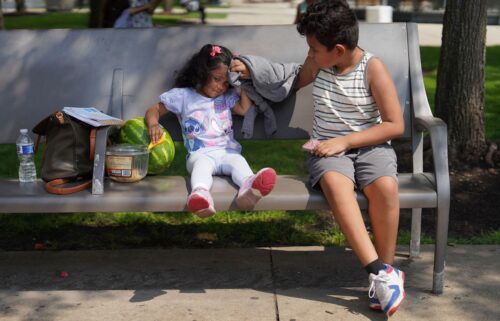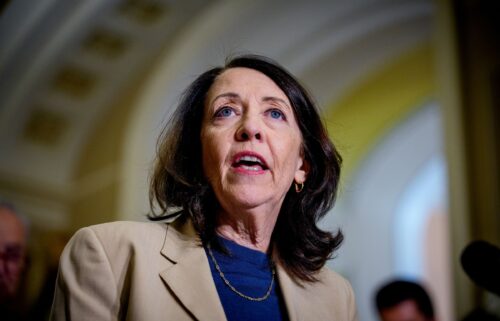Winter is here, but it’s losing its cool
By Elisa Raffa, CNN meteorologist
(CNN) — Winter is here, but for most of the United States, it’s feeling less and less like it.
At 10:27 p.m. ET on Thursday, Earth’s Northern Hemisphere will be at its greatest tilt from the sun, marking the winter solstice: the shortest day of the year and the official start of the coldest season.
But winter is warming rapidly because of human-caused climate change and it’s having an impact on snow, tourism, winter sports, local economies, dinner plates and even allergies.
The winter period from December to February is now the fastest-warming of the three-month seasons for nearly 75% of the US, according to an analysis of NOAA temperature data by Climate Central, a nonprofit climate research group.
The analysis looked at average winter temperatures for 240 locations across the US and found the winter warming trend covers every corner of the map — temperatures had warmed in 97%, or 233, of the spots since 1970.
Winter temperatures increased by 3.8 degrees Fahrenheit on average since 1970 in these warming locations. Winters in the fastest-warming cities have warmed by as much as 7 degrees.
The Northeast and Upper Midwest are the regions warming fastest, and are running a nearly 5-degree winter fever. This includes some ski towns like Burlington, Vermont, (7.7 degree increase) and Concord, New Hampshire (6.6 degree increase). Winter in notoriously cold Milwaukee is now 6.7 degrees warmer on average.
For many, a little extra winter warmth may sound nice. But milder winters come with consequences.
“Wintertime plays important roles in the life cycles of plants, animals, and insects, the recharging of freshwater supplies, and sustaining snow and ice for winter recreation, which supports local economies,” said Lauren Casey, a meteorologist at Climate Central.
A warmer winter doesn’t mean it’s sweltering like summer all season long — there will still be cold days in a warmer climate. But the cold of winter will become less frequent and less extreme. As average temperatures rise, it will leave less room for extreme cold swings.
Cold snaps across the US are now an average of six days shorter than they were in 1970, Climate Central’s data shows. And though cold temperatures will still occasionally set records, they are far more likely to be outpaced by warm records.
There are double the warm temperature records as cold ones in 2023. At night, the discrepancy grows, and there is triple the number of record warm low temperatures compared to record cold ones, NOAA data shows.
Overnight minimum temperatures are warming faster in winter than in any other season since records began in 1896. Winter’s overnight temperatures have been warming at a rate of 1.78 degrees per century since 1900 — 25% faster than the rate for winter’s daytime highs, according to CNN analysis of NOAA data.
A separate Climate Central analysis of overnight low temperatures at 231 US locations found 88%, or 204 cities, experienced a long-term decrease in the average number of freezing nights each year since 1970.
Reno, Nevada, now has 91 fewer freezing nights each year on average, losing more than any other location the list. Cities in Nevada, Arizona, California and Florida that used to see an occasional night below freezing no longer feel the chill at all.
Even cities known for cold outbreaks — like Buffalo, New York, Chicago, New York City, Boston, and Detroit — now no longer experience two-to-three weeks’ worth of freezing nights each year.
These changes are bad news for several industries that rely on a predictable chill.
A study by the International Olympic Committee found rising temperatures may cause ski season to “start up to a month later and finish up to three months earlier,” a finding that threatens to take $1 billion out of the US economy, according to a 2018 study by the climate advocacy group POW and REI.
On US farms, the $27 billion fruit and nut industry is losing out on chilling time as winters warm — a necessary exposure for the crops to chilly temperatures which allows them to properly bloom in the spring, another Climate Central analysis found.
For example, viable chill time in California’s fertile Central Valley, where 40% of the US’ fruits and nuts are grown, could drop by 25% by the end of the 21st century, the US Department of Agriculture said.
With less chill time, there could be less produce like walnuts, pistachios, and cherries to go around, and what’s left is more likely to be of poorer quality, the USDA said.
“That, of course, could lead to impacts for food companies, as well as increased food prices which can contribute to or worsen food insecurity,” Casey told CNN.
The warmer, longer growing season also increases exposure to pests and pollen, worsening allergies.
Worse yet, for winter lovers: The season of sniffles and sneezes will also be here sooner than you might expect — warming winters are causing spring to start weeks ahead of schedule.
The-CNN-Wire
™ & © 2023 Cable News Network, Inc., a Warner Bros. Discovery Company. All rights reserved.


